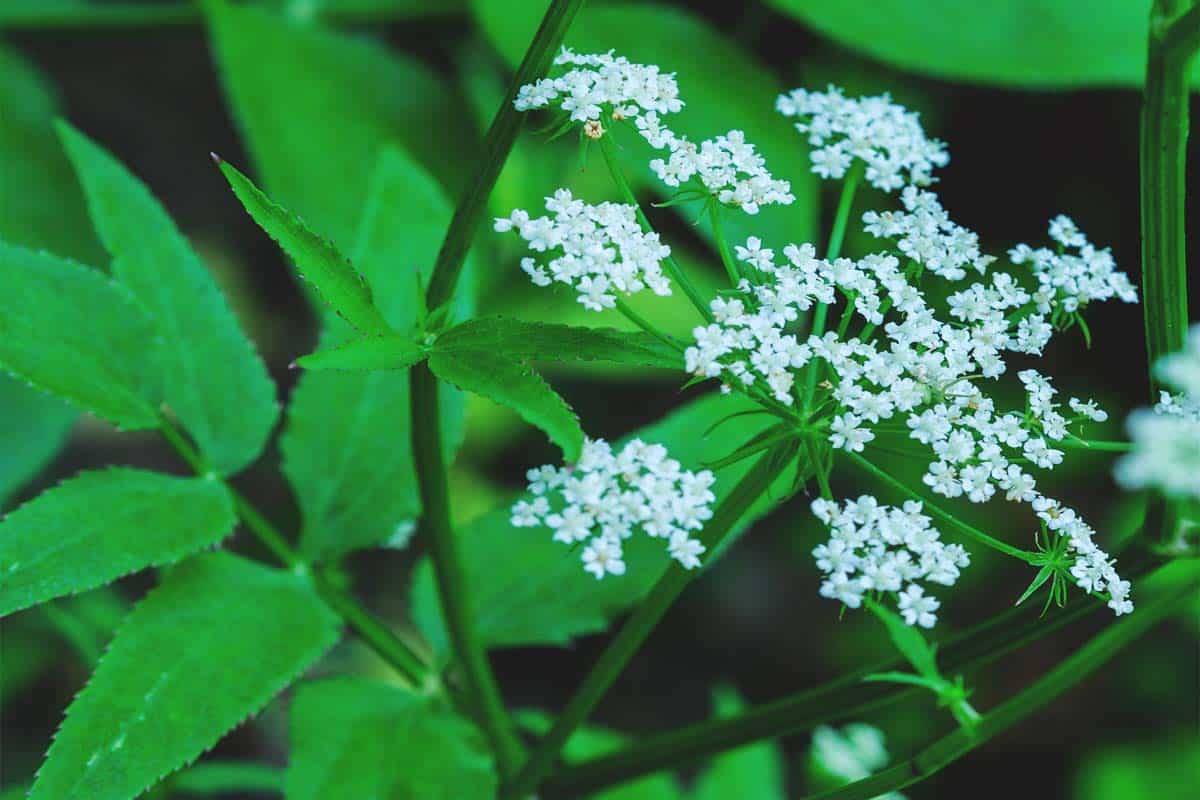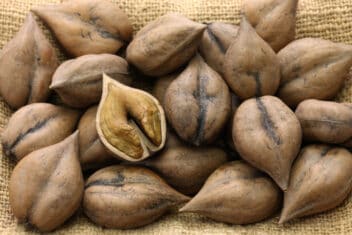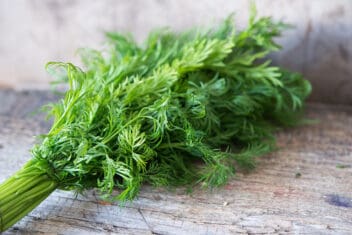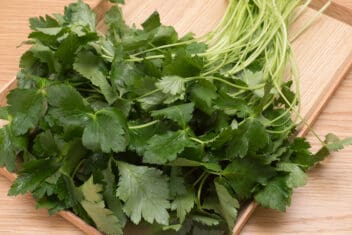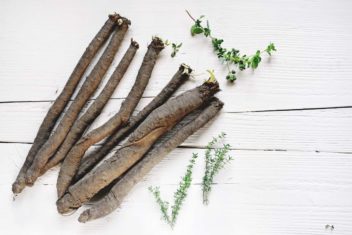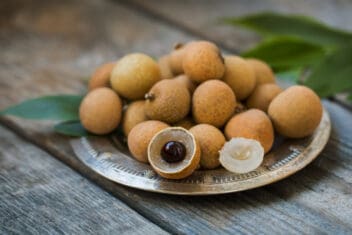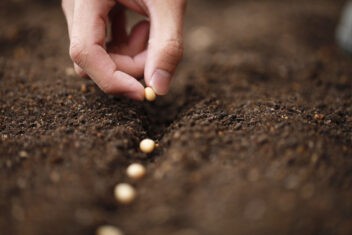If you grow skirret, you’re growing a nearly-forgotten, historically important plant. The cultivation of skirret dates back centuries – even before the potato became common.
Skirret disappeared from gardens and menus in the late 1800s, partly due to the ease of growing and cooking potatoes. Today, skirret is becoming one of those vegetables a few faithful love.
There’s a good reason for that – this delicious perennial root vegetable tastes like a sweet carrot and parsnip combined. Ready to learn more?
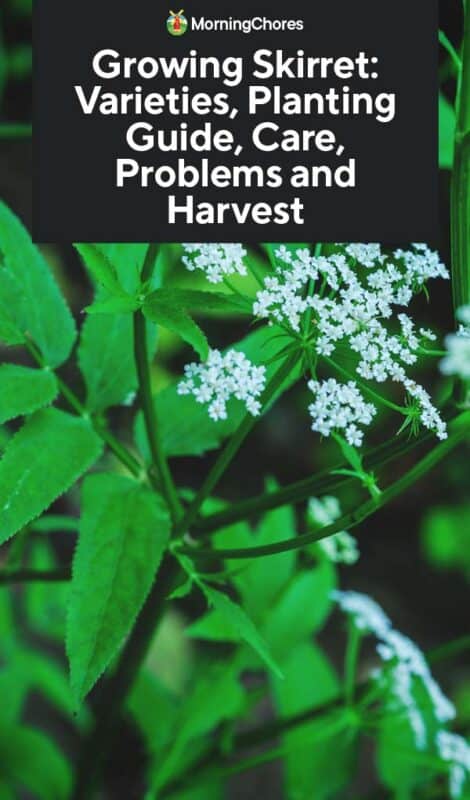
What is Skirret?
Skirret, Sium sisarum, is part of the parsley family, along with carrots, celery and dill. Also known as crummock, the plant originated in China and was brought to Europe over 1,000 years ago.
It was incredibly popular during the Tudor era in England. But because it was more difficult to harvest and prepare than potatoes, skirret fell out of favor, according to the Telegraph.
The root, which is a bit thinner than a carrot, has a sweet flavor similar to the familiar orange veggie, with a peppery after-bite.
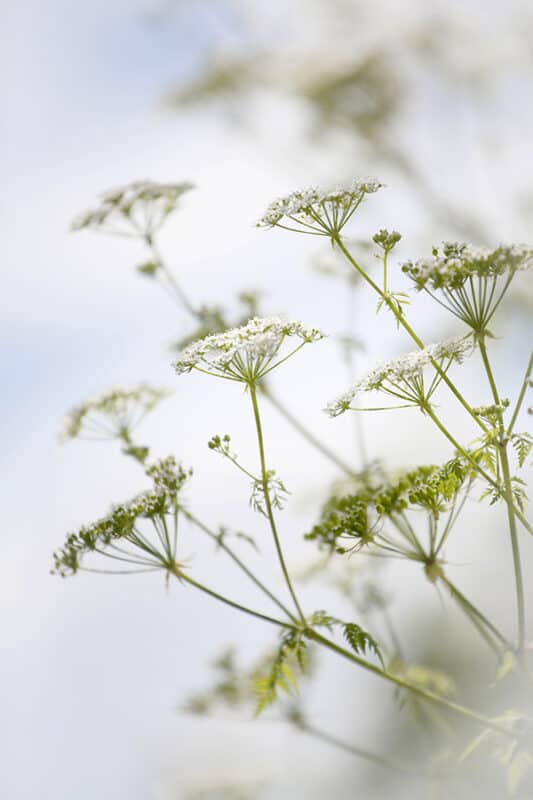
The pretty plant has clouds of tiny, fragrant white flowers that attract lacewings and other beneficial insects.
How to Plant Skirret
Skirret is suitable for growing in any garden type, but if I were to plant a survival garden or a garden to be self-sufficient, skirret would be one of the plants I’d rely on due to its high yields and perennial growth.
One plant gives you numerous roots, and if you leave a few pieces in the ground, it will come back year after year.
Where to Plant
Skirret grows well in zones 5 to 9. It’s a cool weather plant and tolerates a cold winter. That’s why it grew so happily for so long in places like Scotland.
Plant in full sun. If your daytime temperature exceeds 90°F, allow for partial shade later in the day.
Skirret loves deep, rich organic matter in sandy to loamy soil with good drainage. Soil pH of 6 to 6.5 is best.
When to Plant
Plant in spring when all chance of frost has passed. Although skirret is cold-tolerant, the young shoots don’t like low temperatures.
If you’re starting your skirret inside from seeds, plant them about 2 months before the last frost and keep the plants warm until all frosts have passed for the year.
Two months of growth will give your skirret a good head start.
Container Planting
You can plant skirret in a pot, but it needs to be deep. As a root vegetable. it needs plenty of space below the surface. If you don’t allow enough depth. you end up with more leaf growth than root.
Plant your skirret in at least a five-gallon container and water regularly. Root vegetables won’t flourish if they dry out.
You can use similar container techniques that you use for growing potatoes.
Planting Seeds
Skirret seeds aren’t common, but if you manage to get a hold of some, they remain viable for at least three years. If you don’t intend to plant them straight away, store them somewhere dark below 50°F. They can last up to five years stored this way.
Direct sow in the garden in spring after frosts. Skirret takes up to three weeks to germinate and it’s often sporadic, so if some of the seeds don’t germinate with the others, don’t give up.
Poke a little hole with your finger to the first knuckle and drop the seed in. Cover lightly with soil and use a spray bottle to wet the soil.
The alternative to direct sowing in the garden is sowing the seed in small pots inside. I much prefer this method due to how long and irregularly skirret to germinates. I also find birds in my area seem to like the tiny skirret plants under 2 or 3 inches.
Root Division
This is the best way to plant skirret, so if you know someone who has a plant, ask for a root cutting or offset.
Take a root cutting and plant in good quality seed raising mix or potting mix. Use a pot at least four inches deep and plant the cutting just below the surface. Water well and transplant to your garden when the plant reaches at least 3 inches height.
If you can, get an offset. This is the new growth within the root cluster and sits at the top of the crown.
Spacing
Skirret is surprisingly tall and takes up a reasonable amount of space. Space each plant 18 inches apart. Rows should be 3 feet apart. A healthy skirret plant will reach up to 4 to 5 feet in optimal conditions. The average height is 3 to 4 feet.
Caring for Skirret
Once you’ve got the skirret plants growing, they don’t need constant care. A little food, some water, and you’ll be enjoying your harvest in no time.
Fertilizer
If you don’t already have rich, loose, loamy soil, ensure you dig in well-rotted manure prior to planting. Fertilize well with a well-balanced fertilizer.
One thing to note about skirret is its love for nitrogen. However, too much nitrogen will result in lots of leaf growth and very little root development.
I find an NPK of 10-10-10 gives skirret good root development and lush foliage. You may want to test your soil to be sure that you aren’t over-fertilizing.
Water
Growing skirret likes a lot of water. Give it plenty to the point the soil doesn’t dry out in between watering. It may take a little while to figure out how much water to give it. Just don’t leave skirret soaking in puddles or totally dry for days.
If skirret doesn’t get enough water, the roots become fibrous.
Mulch
Apply a layer of mulch to keep the soil moist in summer and warm in winter.
Companion Planting for Skirret
Skirret takes at least six months to get a harvest, so I plant with anything that takes less than 6 months to harvest and isn’t too deep.
You can plant skirret with:
- Leeks
- Lettuce
- Radish
- Arugula
- Spinach
- Radish
- Bok Choy
- Onions
- Chives
Avoid planting with parsley, carrots, or dill, since they can share the same pests and diseases.
Common Problems and Solutions for Growing Skirret
Skirret is remarkably free from serious issues, but like all plants, it has a few problems.
Field Mice or Voles
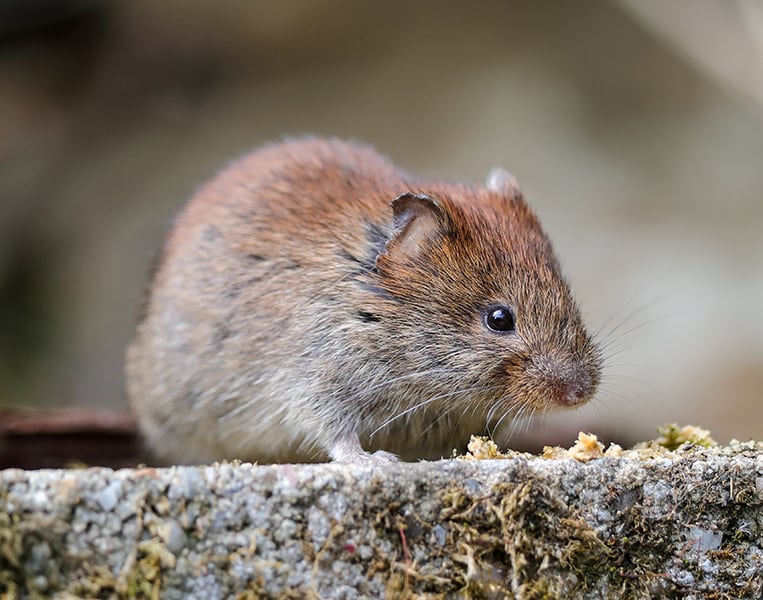
I’m not sure why skirret is so attractive to voles, but they eat the young plants and roots. You’ll wake up in the morning and your skirret will be gone.
Avoiding voles is the best weapon.
- Keep areas around skirret clear of thick vegetation they can use for cover.
- Keep the skirret area weed free
- Don’t place bird feeders near your skirret patch
Root Knot Nematode
If you have long, hot conditions or short, warm winters, root knot nematodes may be an issue. This little parasite attacks skirret roots, leaving them disfigured and knotty, stunted, and woody. The yield will be seriously reduced.
Plant skirret in well-tilled soil that has had good crop rotation in the past. Soil solarization can be effective.
If you have high levels of root knot nematodes, deal with the issue before you plant skirret.
Late Blight
This fungus-like organism is usually found in potato and tomato plants, but skirret can become affected as well. The leaves become infected and the fungus spreads quickly. Yield will be reduced as well as the overall health of the plant.
If you just have one plant infected, pull it and destroy it. Use a fungicide product targeted at controlling water mold and apply when late blight symptoms are present.
Carrot Fly
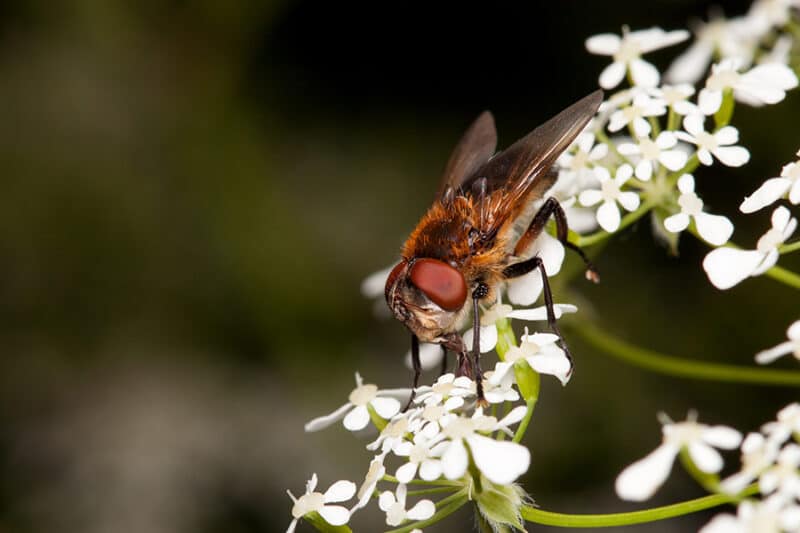
Carrot flies lay larvae that nibble through the roots of plants in the carrot family. While they probably won’t kill your plant, they can ruin a perfectly good harvest – or at least reduce it.
The first line of defense is to plant things thta carrot flies don’t like around your skirret plants. Think alliums like onions, garic, chives, and leeks. You can also place a 3-foot mesh fence around your plants, since carrot flies don’t fly high.
Floating row covers are a reliable way to keep the pests away, and they may be your best option if you have a serious infestation in your neck of the woods.
Harvesting Skirret
Skirret takes a whole year to develop roots for harvest, but it’s worth the wait. Once the plant dies back you can begin to take the roots.
Dig down carefully and remove the roots. I take the whole root cluster out and replant the offsets. These are the new growth at the top of the crown. Pinch them off and replant for next year. They often have a purple tinge.
If you’re patient, wait two or even three years to get a massive root cluster. By all means, take after one year though.
Remember, skirret is a true perennial and you can leave parts in the ground to regrow in the same spot if you want to.
Using Skirret
Skirret is tasty roasted, stir-fried, in stews, in casseroles, and boiled. That said, tender skirret roots can be scrubbed clean and eaten raw if you’d like. They’re wonderful shredded into salads.
Test the root if it’s older than a year as the core may be fibrous. Cut the core out if this is the case.
If you’re interested in perennial vegetables or rare plants, skirret is a great one to start with. It takes a while, but you can plant it and in most circumstances, you can just leave it to do its thing. Give this unique and exciting plant a space in your garden.
If you have any tips on growing skirret, we’d love to hear them.
